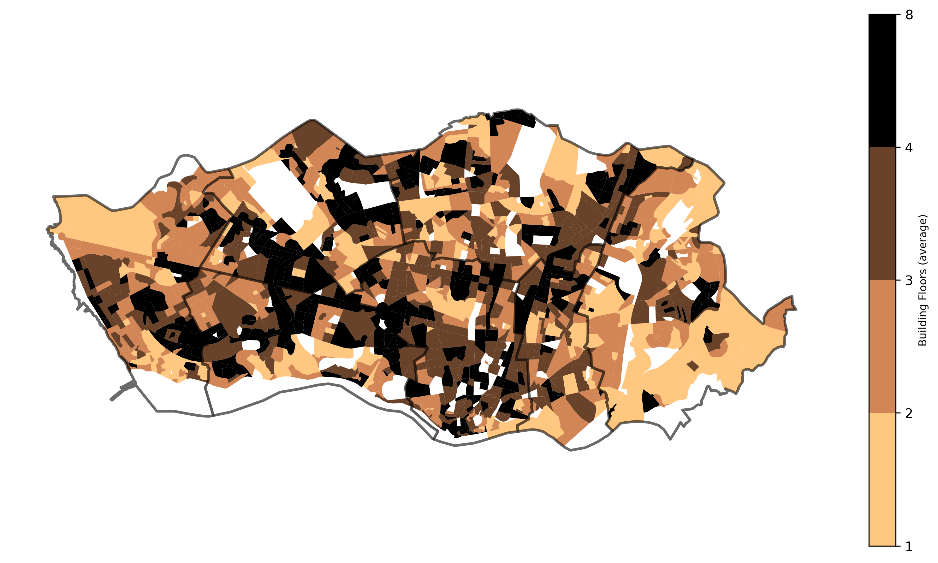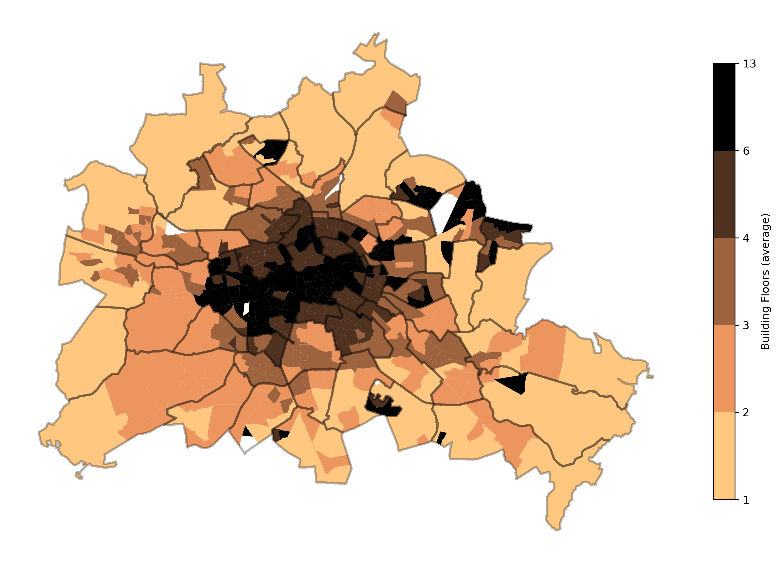
Figure 1 – Average built-up floors in Porto.
The CircEUlar team at INEGI is exploring how different urban patterns dictate energy and material needs, through spatially-explicit modelling of a comprehensive set of indicators. Two cities under analysis are Porto and Berlin, which show significantly different development patterns. The number of floors, for instance, has been widely acknowledged to contribute to higher densities and, hence, to lower energy and material needs per capita.
While Porto evidences a scattered pattern, with higher number of floors typically associated with business areas and higher buildings clustered around key road axis (not necessarily in the city center), Berlin in turn, seems to have a much more structured and consistent spatial pattern with higher buildings concentrated in the city center, following concentric patterns around that area. In both cities, this variable evidences a significant influence on the urban footprint for both energy and materials.
Urban planning and land use management policies play a significant part in this. For instance, in the case of Porto, the city masterplan foresees a maximum height limit but not a minimum height for the different development areas. This fails at supporting densification strategies in key urban areas, and at promoting more efficient and sustainable development patterns. Based on this work, CircEUlar will assess the most relevant determinants of urban circularity which will help inform carbon-neutrality pathways.
By INEGI

Figure 2 – Average built-up floors in Berlin.
